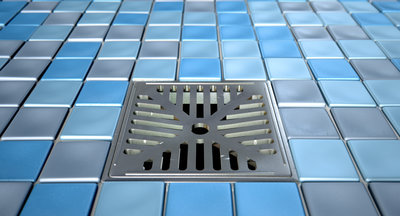In the short term try 5 10 bleach solution in water not just water.
Old floor drain no trap.
Water in any trap under unused drains will eventually evaporate.
Basement floor drains don t get a lot of attention until the sewer backs up or the basement smells like an outhouse.
Floor drains are no exception.
Many older houses in minneapolis and saint paul have an old style of plumbing trap called a drum trap which is no longer allowed in minnesota except in special circumstances.
The water filled trap prevents noxious sewer gases from backing up into the home.
Connecting a trap to a vertical drain with a wye fitting and a 45 degree elbow seems like a good idea.
The shaded portion shows the trap where water will always sit which prevents sewer gas from coming in.
Floor drains are most often installed during original construction often in the utility area to drain away excess water in the basement.
The concrete floor around the drain gently.
That would allow sewer gas to come up through the drain into the room.
And the empty trap will allow sewer gas to flow into your home.
The traps used in floor drains are like those used under kitchen and bathroom fixtures.
The main problem.
The drain trap is an important part of the floor drain.
The photo at right shows a floor drain as viewed from the side.
You have a water trap under a floor drain laundry tub or wash basin that has dried out from lack of use.
The drain pipe dips down in a u that is always filled with water whether flowing or still.
Many basement floor drains tie directly to the home s sewer system but in some communities local building codes require floor drains to run to a sump pit where a pump lifts the water to the exterior surface of the house.

